
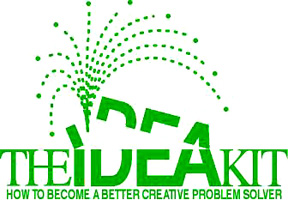
As a designer, design teacher, and graduate student at North Texas in the 1980s, I was fascinated by the act of creativity - how a person, specifically a designer, could invent and arrive at a solution that was new and novel. I considered exploring the process as my dissertation topic. I later concluded that it was not quite appropriate for that and I had also become sidetracked by other options. But the fascination stuck with me.
In my classes at the Performing and Visual Arts High School in Dallas, I was able to use some of what I had learned. I further explored how one can become more creative and developed some exercises for the students to participate in. Proposing mind games and assigning puzzles became part of my curriculum for the next 30 years. In Oklahoma, teaching the intro course, Graphic Design I, I incorporated the info, activities, and puzzles into the course. Creativity and problem solving was not adequately addressed in the design curriculum. There was enough interest from the students to go further than what we could do in GDI, so I proposed a seminar on Creativity.
I wrote and designed a packet of materials that I labeled, The Idea Kit: Tools to help one become a better creative problem solver. From that seminar, a summer course, Creativity, was offered. The product detailed below was created and used in those summer courses. It later evolved into a series of essays on this website that addressed the process of creativity and problem solving and the article: 10 tips for better ideas.
Mock-up dummy for The Idea Kit
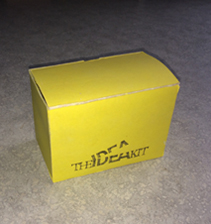
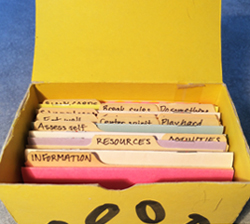
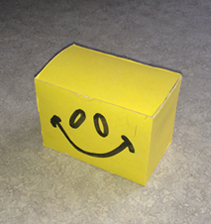
Contents
Booklets
• Welcome, How to use The Idea Kit
• Information to help you become a better Creative Problem Solver
• Resources to help you become a better Creative Problem Solver
• Activities to help you become a better Creative Problem Solver
Activity forms
• All About Me: My journal of self-assessment
• Forms: Self-assessment, Centering, Play Hard, Healthy Food, Fearless, Yes I can, Neurobics, Scratch the Itch
• Mind games to solve to help you become a better Creative Problem Solver
• Eureka, Ah ha: My journal of great ideas
• Blank cards
• Mailing list reply card
Fun stuff
• Troll doll
• Mind game: pyramid puzzle
• Balloons
• No Excuses sticker
• Sheets of Happy Face stickers
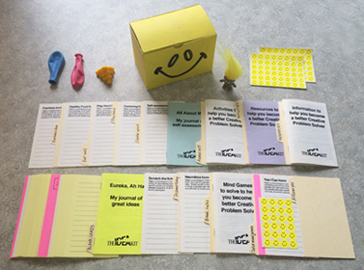



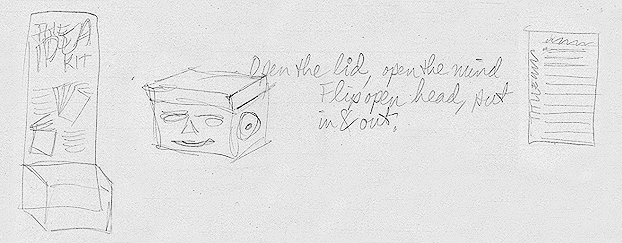
A working dummy of a book:
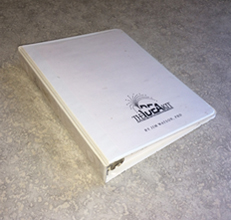
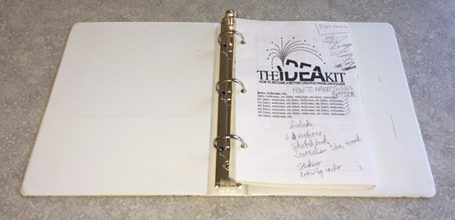
Some affirmation slogans
These were considered for coffee mugs, t-shirts, and bumper stickers.
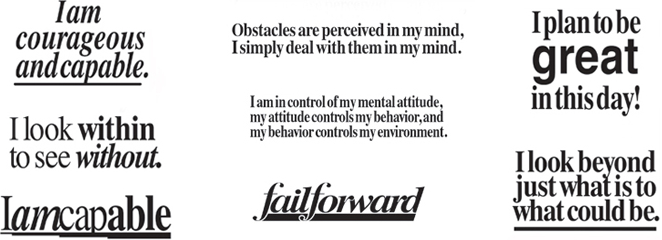
Transfer to online digital format
The Idea Kit sat dormant for several years. Once this website went up in January, 2000, I transferred the info from the product to the web essays. There was so much material, I broke it into 4 sections:
• Introduction
• Information
• Activities: Wings
• Activities: Roots
In 2013, I edited and reorganized the information into the website section, Design Class. The information was split into several files: Creative Problem Solving, The Design Process, and Design basics. By this time, I had noticed the trend to 'sound bites' and lists. The activities were combined into one file, How to be a better creative problem solver.
Essay of content information: Design School Fundamentals
Dates
Prep materials: 1992-93
Wrote & designed Idea Kit: 1993-94
Seminar: Summer 1993
Logo design and production: 1993-94
Idea presentations: 1993-96
Made marketing mock-ups: winter 1994
Creativity course: Summer 1995
Uploaded 4 sections to website: 2000
Transferred to Design Class essays on Website: October 2013
The idea Kit logo
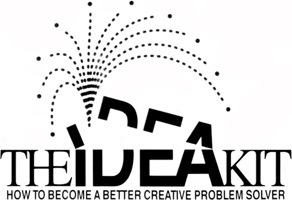


The identity for The Idea Kit conveys the flow of ideas that spew from the human mind. Freeing and opening the brain allows greater fluency of thoughts and ideas.
• The 10 dots being spewed in the logo represent the 10 major activities that encourage open creative thinking.
• The important word 'idea' is emphasized by setting it in a different font, size, and boldness.
• Idea is set in sans serif for purity and simple uncluttered lines.
• The and Kit are set in a classic serif font to convey the dichotomy of roots (classic serif) and wings (modern sans serif)
• When set in color, vivid green represents positive growth.

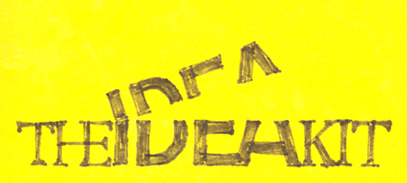


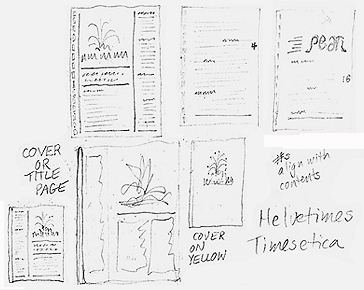
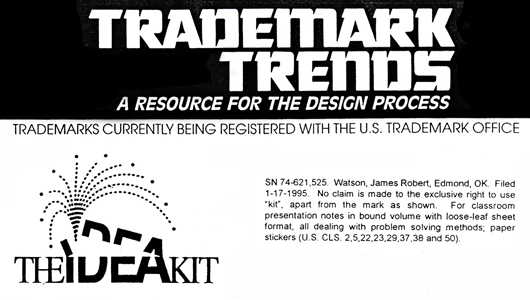
Handout used at the Business of Art presentation, June 1993
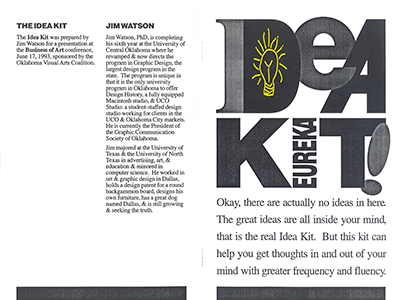
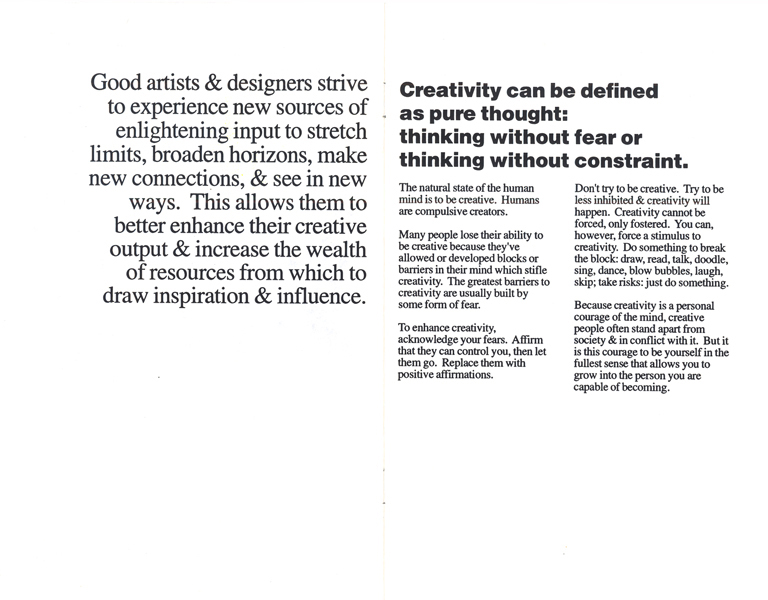
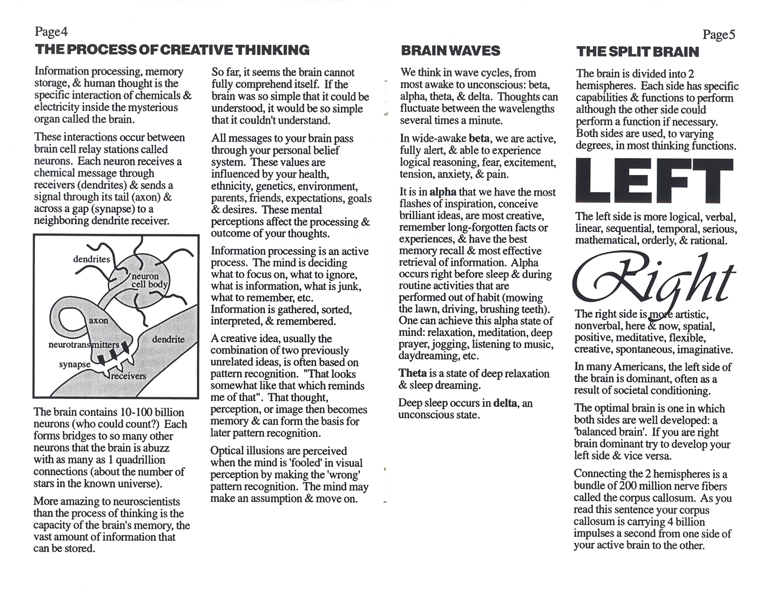

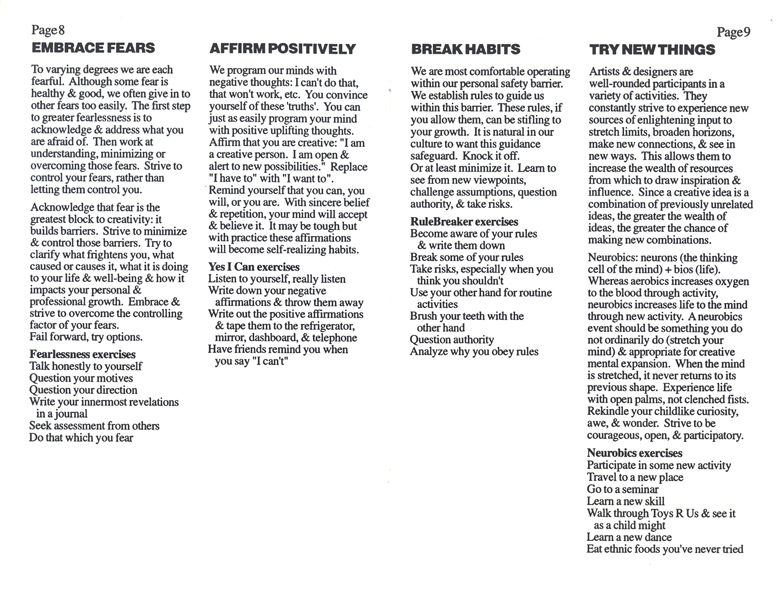
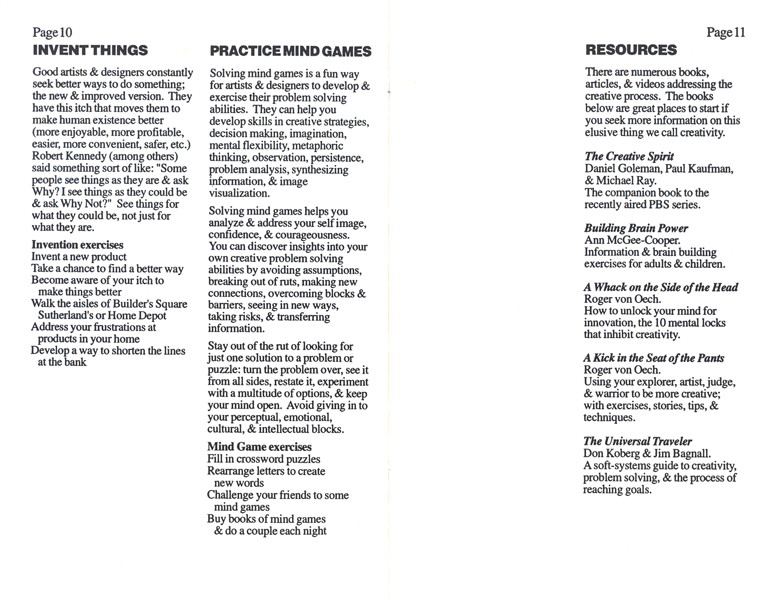
www.jamesrobertwatson.com/ideakit.html